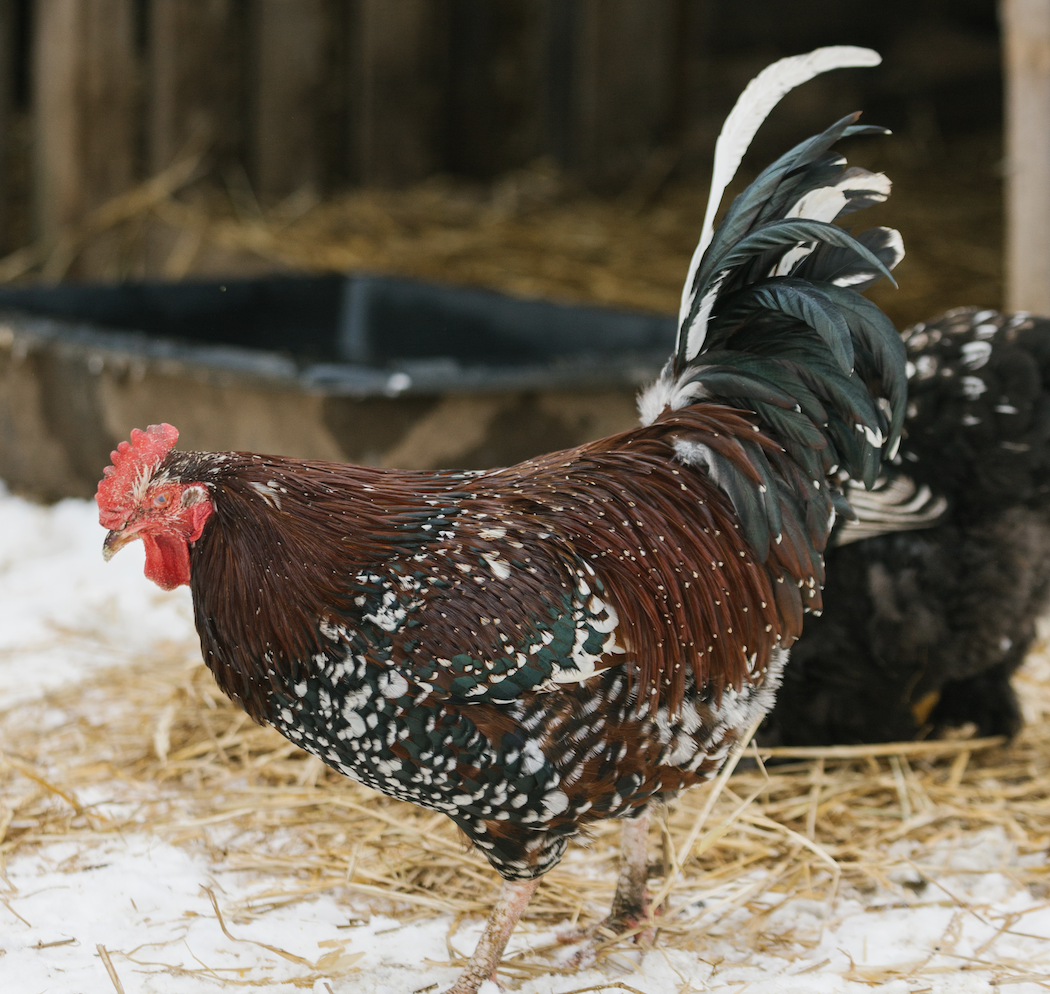
How does a rooster fertilize eggs?
He injects sperm into a hen by pressing his cloaca against hers in a process called a cloacal kiss. During this time, the hen squats and the rooster attempts to balance himself on her back while grabbing her head feathers with his beak. In doing so, his claws slide against the hen’s back, sides, and wing feathers.
This process is called treading, and it can be one of the drawbacks of keeping a rooster. A hen that is mated often will eventually lose feathers, and may then develop scratches or wounds.
Can you do anything to prevent damage to hens?
Yes. You can do a few different things to minimized the problems created by treading. For starters, keep the rooster’s toenails trimmed.
Also, as soon as a hen starts missing feathers because of treading — or even before feathers go missing — outfit the hen with a mating saddle to protect her from damage during breeding season. After the flock molts in the fall, and the hens are fully feathered, the mating saddles should be removed.
Yet another option is to house the male in his own private quarters for part of the time. The average duration of fertility from each mating is about 10 days. So you could, for instance, alternately let the rooster in with the hens for a few days, then confine him for a few days.
Aside from fertility, what is another reason to keep a rooster?
A rooster helps the flock maintain social cohesion. He is typically the highest chicken in the pecking order. That means he is able to somewhat control the flock to keep things running smoothly. For instance, he’ll likely step in and stop two hens from squabbling.
He also watches for predators and other dangers. If he detects the approach of danger, he will alert the other chickens.
Is there any way to keep a rooster from crowing?
Not that I’ve ever heard of. Decrowing surgery is expensive, extremely risky, and not always successful, therefore few veterinarians will agree to perform the operation.
You can get a no-crow collar that works by limiting the rooster’s ability to stretch his neck, thereby reducing the volume and frequency of crowing. But it doesn’t completely stop the crowing. Plus, getting the collar tight enough to discourage crowing could end up strangling the bird.
However, there are other ways to keep a rooster from stretching his neck for an all-out crow. For example, at night you could put him in a ventilated box, pet carrier, or cage. The container must be small enough to prevent neck stretching. Keeping the container away from light also helps. But when you let the rooster out during the day, he will still occasionally crow.
…
blog.mcmurrayhatchery.com
Feed Name : Murray McMurray Hatchery Blog
Backyard Chickens,Featured,Gail Damerow,Guest Articles
hashtags : #Pros #Cons #Keeping #Rooster #Gail #Damerow






Leave A Comment